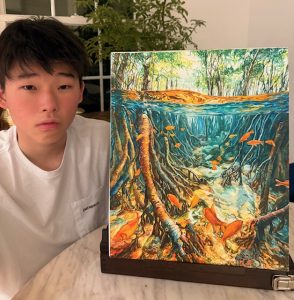Recent Developments in Ukraine – What’s Next?
October 20, 2022
Russia’s war in Ukraine has by now been raging for over seven months. Despite all predictions, Ukraine did not quickly capitulate, instead offering fierce resistance. An early attack attempting to seize Kyiv was repelled, preventing an early defeat. This successful, improvised defense has undoubtedly given Ukraine a chance to keep fighting. The withdrawal of Russian forces from the north gave Ukraine crucial time to mobilize and prepare its forces, which along with massive amounts of aid from NATO member states, have succeeded in solidifying Ukraine’s front lines. In some regions, such as Kharkiv Oblast, Ukraine has even staged successful counter-offensives to rout Russian troops. With a continuous supply of foreign equipment and manpower, Ukraine has been able to grind Russia’s attacks in the east to a slow battle of attrition, with significant losses on both sides.

The slower pace of the military situation is not to say that the political aspects have slowed down, however. Not long after Ukraine’s counter-offensives in Kharkiv, Russia made two significant decisions – it announced a partial mobilization of up to 300,000 reservists, and moved to officially annex the occupied
regions in Ukraine – namely, the separatist regions of Donetsk and Luhansk, as well as Zaporizhzhia and Kherson. The first decision led to a mass exodus of military-aged males from Russia – over 200,000 had left the country a week since the mobilization was announced. The latter move, which was widely anticipated by analysts and policy experts from the West, is yet another major escalation in the war. Some have pointed out that if these regions are integrated as Russian territory, Russia may have a justification for the use of much more devastating weapons to “defend” its own land. These devastating weapons include nuclear weapons, which have been a major concern since the start of the conflict.
Many media figures, as well as political figures in Russia, such as Ramzan Kadyrov [the leader of the Chechnya, a state in Russia] have actively suggested the deployment of low-yield nuclear weapons, frustrated by the lack of progress and recent successes by Ukraine on the battlefield. Meanwhile, the U.S. has reaffirmed its commitment to act if any nuclear weapons are used in Ukraine. While former Russian president Dmitry Medvedev has claimed that NATO is too afraid of a potential “nuclear apocalypse” to intervene even if Russia uses nuclear weapons, Washington has threatened Russia with “catastrophic consequences.”
^ Medvedev, among other Russian political figures in the ceremony where the 4 occupied Ukrainian oblasts were officially annexed
Interviews of BCA students on what they predict or believe would happen in the next few months have produced a number of different ideas. Some suggested that Ukraine would continue to attack until it reclaimed its lost territories, and signed an armistice or peace agreement afterwards. Another student stated, “As much as I hope Ukraine wins, I think Russia might still gain an upper hand, especially with how they have been gathering more troops.” Similar predictions included further Russian offensives & subsequent annexations, while others believe that the war will only continue to slow from now on, eventually culminating in a de facto peace agreement. “Ukraine did manage to take a good piece of its land back, but with Russia sending reinforcements, I think any more attacks by Ukraine would be unlikely. The war might just end at the current situation, with Russia taking those areas, but the rest of the world continues to see those places as a part of Ukraine. Considering everything [later stated this meant the protests against conscription in Russia] going on, it’s probably in the best interest of Russia to take what they have and stop the war quickly.”
^ Russian police arresting protesters in Moscow the day the mobilization was announced
Though the conflict is at a slower pace than it was in late February and early March, the political landscape between Kyiv and Moscow continues to be volatile. More protests against conscription in Russia have occurred, and Ukraine’s resolve has only grown stronger since its recent military victories in Kharkiv. With NATO aid and momentum on one side, and the conscription of hundreds of thousands of additional troops on another, the balance of the war, and the outcome itself – could lie in the next few weeks and months of the conflict.





